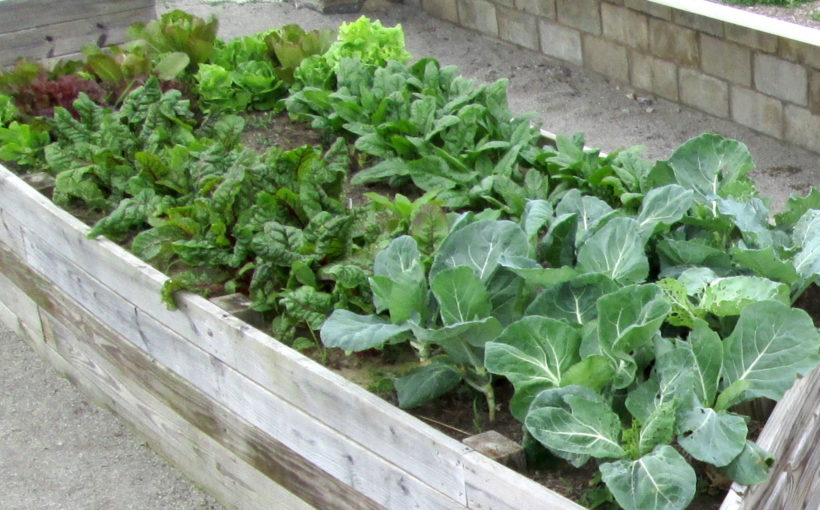With a home-grown food garden, you can pick food at the peak of flavor and choose varieties you’ll never see in the supermarket. Whether it’s a full-scale kitchen garden or a single container garden of herbs, carve out some room for growing food.
We’ve put together the basics for growing food at home, as well as additional resources in central Indiana. Or contact us directly, and we’ll help you plan, build, and grow your own.

In This Post
- Local sources for supplies and seedlings
- Our favorite seed companies
- Great sources for berry plants and fruit trees.
- Our step-by-step guide to creating your own kitchen garden.
Local Sources
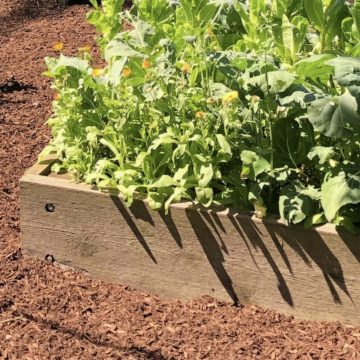
Agrarian Everything you need for growing food in the city, from raised beds and rain barrels to chickens, feed, and coops.
Garrity Stone, Inc. Terrific selection of natural landscape stone. Delivery available.
Greencycle Bulk soil, compost, and stone delivered. Greencycle also accepts garden debris and wood to be recycled into compost and mulch.
Indiana Mulch & Stone Bulk compost, soil, and stone delivered, as well as additional landscape supplies.
Indiana School for the Blind and Visually Impaired Plant Sale ISBVI runs plant sales from their teaching greenhouse four times a year. Plants are grown by ISBVI students in the horticulture program, and proceeds go back into that program.
Mad Farmers Collective Get the transplants for spring and summer vegetables and herbs, as well as freshly harvested veggies, through Mad Farmers Collective. They also offer farmers markets and classes.
Raised Beds Spotts Garden Service offers custom-built raised beds. Contact us to order yours.
Favorite Seed Companies
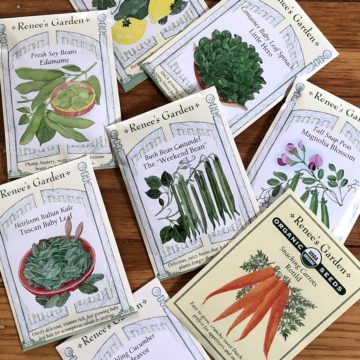 These seed companies do not knowingly buy or sell genetically modified varieties.
These seed companies do not knowingly buy or sell genetically modified varieties.
Seed Saver’s Exchange This not-for-profit is dedicated to saving heirloom strains; they offer about 600 varieties each year.
Renee’s Garden Seeds Renee’s offers seeds specially selected for the home gardener, including organic and heirloom varieties. We especially like their seed mixes.
Botanical Interest This family-owned company offers more than 500 varieties, including heirloom and organic varieties.
John Scheeper’s Kitchen Garden Seeds Scheepers offers a collection of about 350 varieties specifically chosen for the home cook.
Johnny’s Selected Seeds This employee-owned company offers tons of varieties in a range of quantities, including smaller packages for home gardeners, as well as bulk seeds for commercial producers..
Favorite Fruit Resources
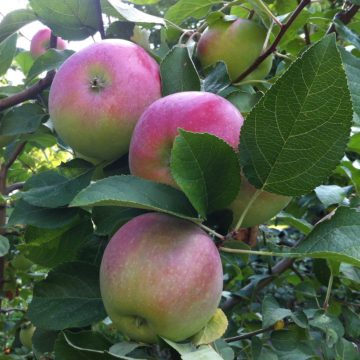 Indiana Berry and Plant Company Based in Plymouth, Indiana, Indiana Berry focuses specifically on small fruit.
Indiana Berry and Plant Company Based in Plymouth, Indiana, Indiana Berry focuses specifically on small fruit.
Stark Bros This family-owned company supplies fruit and nut trees, berries, and landscape trees.
Raintree Nursery The mother of all fruit sources, Raintree carries not just fruit trees and the standard berries, but a host of less-common fruit.
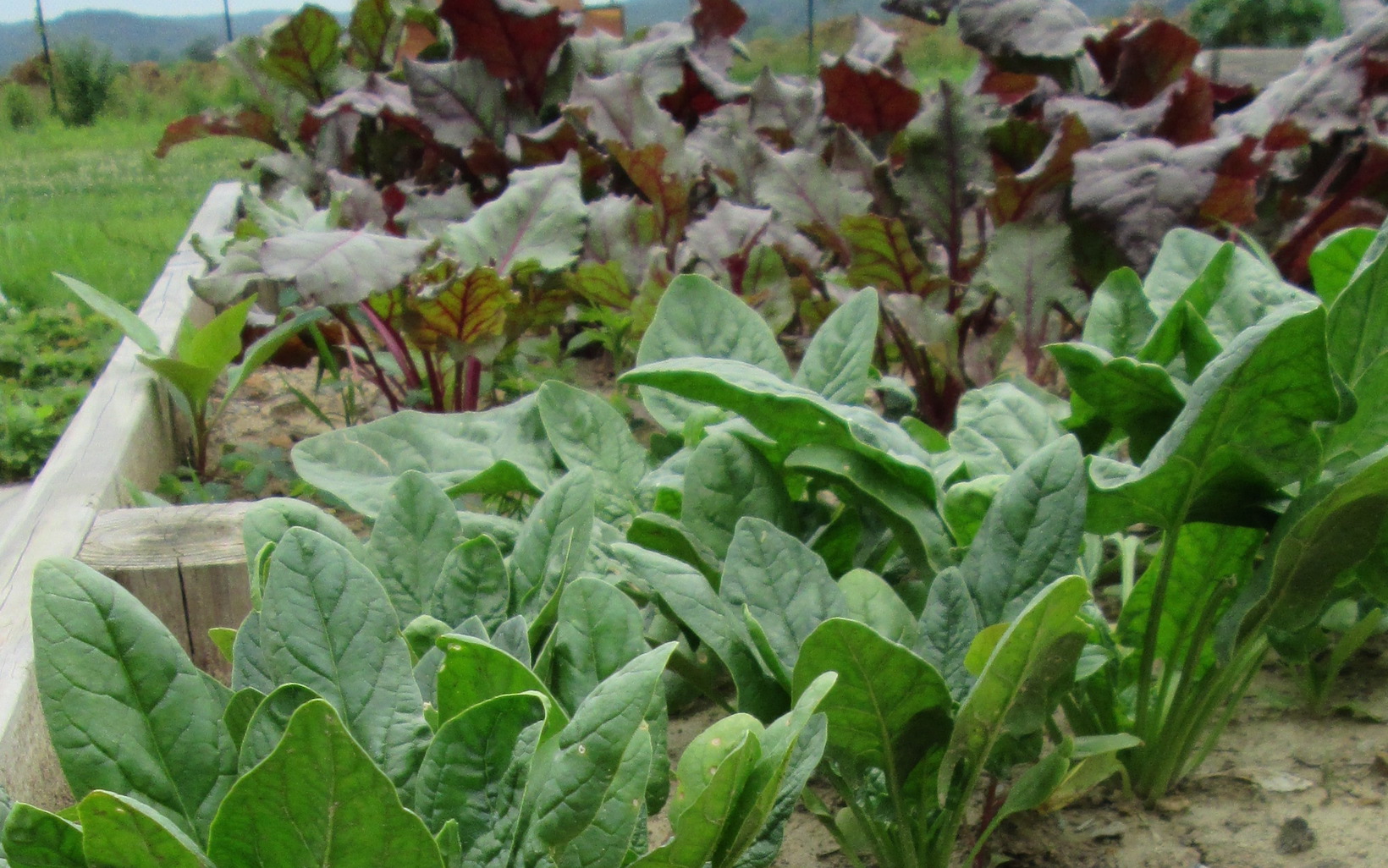
Step-by-Step Kitchen Garden Guide
1. Evaluate your space.
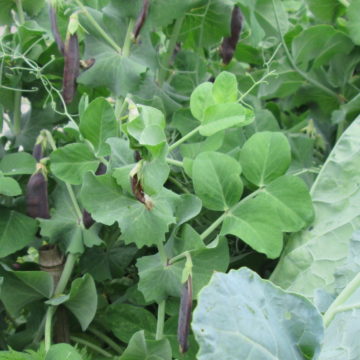
Choosing the Best Place for Your Food Garden walks you through how to pick the best spot. Full sun is best, but some food plants can grow in part shade too.
Growing Foods in Container Gardens has tips for growing in planters and pots, in case you’re short on sunny spots.
2a. Start clearing your garden space.
Clear the space for your garden using one of these methods:
- Kill the existing grass, then till the space. Never till living weeds; you’ll be picking weeds out of your garden for decades.
- Sheet Mulch for Easy Garden Beds shows you how to smother the grass with sheet mulch to establish new beds.
- Mother Earth News’s Quick and Easy Bag Gardening Ideas explains how to grow food in a purchased bag of topsoil.
2b. Or build and fill your raised beds.
- When to Choose a Raised Bed Garden explains the pros and cons of growing in raised beds versus in the ground.
- Building Raised Garden Beds takes you through designing and building your beds.
- Filling Raised Garden Beds with Soil explains what to use and how to determine the quantity you need.
No matter which kind of garden you want, Spotts Garden Service can help you make it. Contact us for a free estimate.
3. Test the soil.
A soil test explains how much organic matter your soil has and the soil pH, among other things. You can skip this step if you’re growing in raised beds filled with the compost-and-topsoil mix we recommended.
- Our Quick and Dirty Guide to Soil explains the structure of soil and where to send your test sample.
- How to Apply Amendments to Garden Soil helps you determine how much compost to add to your soil to increase the organic matter in it. Ideal garden soils are about 5% to 9% organic matter.
- Garden Soil pH: Blue Hydrangeas and Unhappy Azaleas explains how pH affects plants and how to alter yours temporarily.
- Organic Fertilizers for the Garden covers how to read a fertilizer bag, what NPK means, and the best organic fertilizers for different applications.
4. Purchase seeds and transplants.
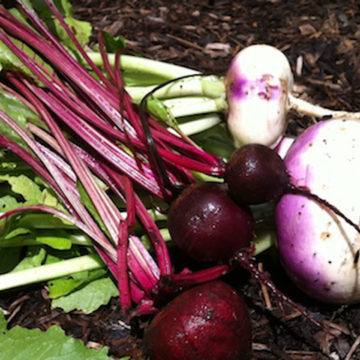 Buy from local independent garden centers and growers; they have high-quality stock and good advice for local conditions. You can also order directly from seed companies on line.
Buy from local independent garden centers and growers; they have high-quality stock and good advice for local conditions. You can also order directly from seed companies on line.
- Choosing Vegetables Seeds for the Organic Garden explains which crops can be grown in spring and which need to wait for warmer weather, as well as which crops are grown from seed and which from transplants that have been grown indoors.*
- Picking the Right Seeds for Your Food and Flower Gardens covers the differences among open pollinated, hybrid, heirloom, and organic seeds.
*We recommend beginning gardeners purchase transplants for their first few seasons. Eventually, you might consider starting seeds indoors yourself, but that’s advanced gardening!
5. Start planting.
Cool season crops can go out as soon as the soil is dry enough, usually in late March or early April. Transplants and seeds for warm season crops don’t go in the ground until at least mid-May. Frost will kill these plants, so you must wait until the frost-free date, which in central Indiana is around Mother’s Day.
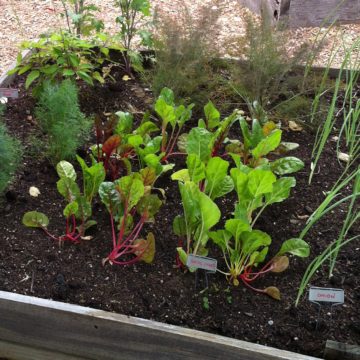
- Purdue Cooperative Extension Service’s Indiana Vegetable Planting Calendar tells you when to plant each crop.
- How to Read a Seed Packet covers planting information, like when to plant, how many days to harvest, and seed depth.
6. Get the most out of your garden.
Use smart strategies to make the most of the space you plant.
- Square Foot Gardening: Maximum Food in Minimum Space covers our favorite system for new gardeners and those growing in raised beds. This combination of intensive planting (putting seeds close together) and succession planting (immediately replacing spent plants with new ones) works in raised beds, planters, and in the ground.
- Grow Vegetables through the Fall discusses planting in midsummer for harvests into November.
- Vertical Gardening Using Trellises and More shows you options for getting plants off the ground.
7. Add some flowers and herbs!
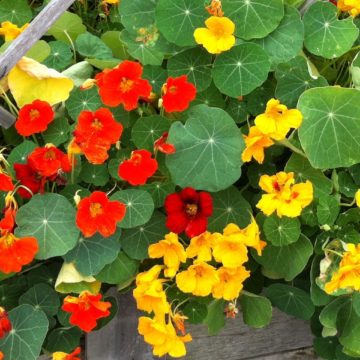
Flowers and herbs add charm and fragrance to the kitchen garden. And they attract pollinators and beneficial insects.
- Growing Herbs offers tips for matching herbs to their preferred soil. Some herbs love the fertile soil of vegetable beds, but others prefer a sunny spot with very lean soil instead.
- Top Kitchen Garden Flowers reviews our favorites for planting with the vegetables. Some of these bloomers are edible!
8. Make a compost pile.
- How to Build a Compost Pile shows you how easy it is to turn weeds and kitchen waste into the best soil amendment there is!
- Top 5 Ways to Use Compost discusses how to use your finished compost in the garden.
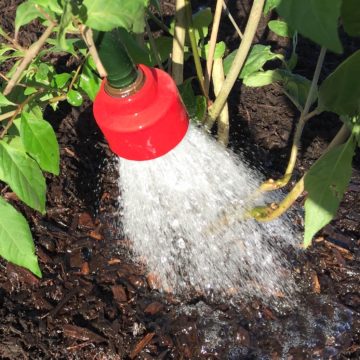 9. Mulch, water and weed.
9. Mulch, water and weed.
- Weed regularly. Pulling weeds can expose more weed seeds to light. We prefer to cut weeds off at the soil line with a hoe or pair of scissors instead.
- How to Mulch Your Garden to Prevent Weeds walks you through applying mulch. Wait until your plants are a few inches tall before mulching with chipped leaves or straw.
- Watering Wisely in the Garden explains how much water your garden needs and how to deliver it. Water by hand or use soaker hoses.
10. Harvest early and often!
Smaller vegetables are sweeter and more tender (that’s why “baby” vegetables often cost more to buy). Pick beans and peas every day or two to keep your plants producing.
Ready to Grow?
We can help you plan and establish your food garden, whether you want raised beds, containers, or an in-ground garden! Contact us today for a free estimate.
